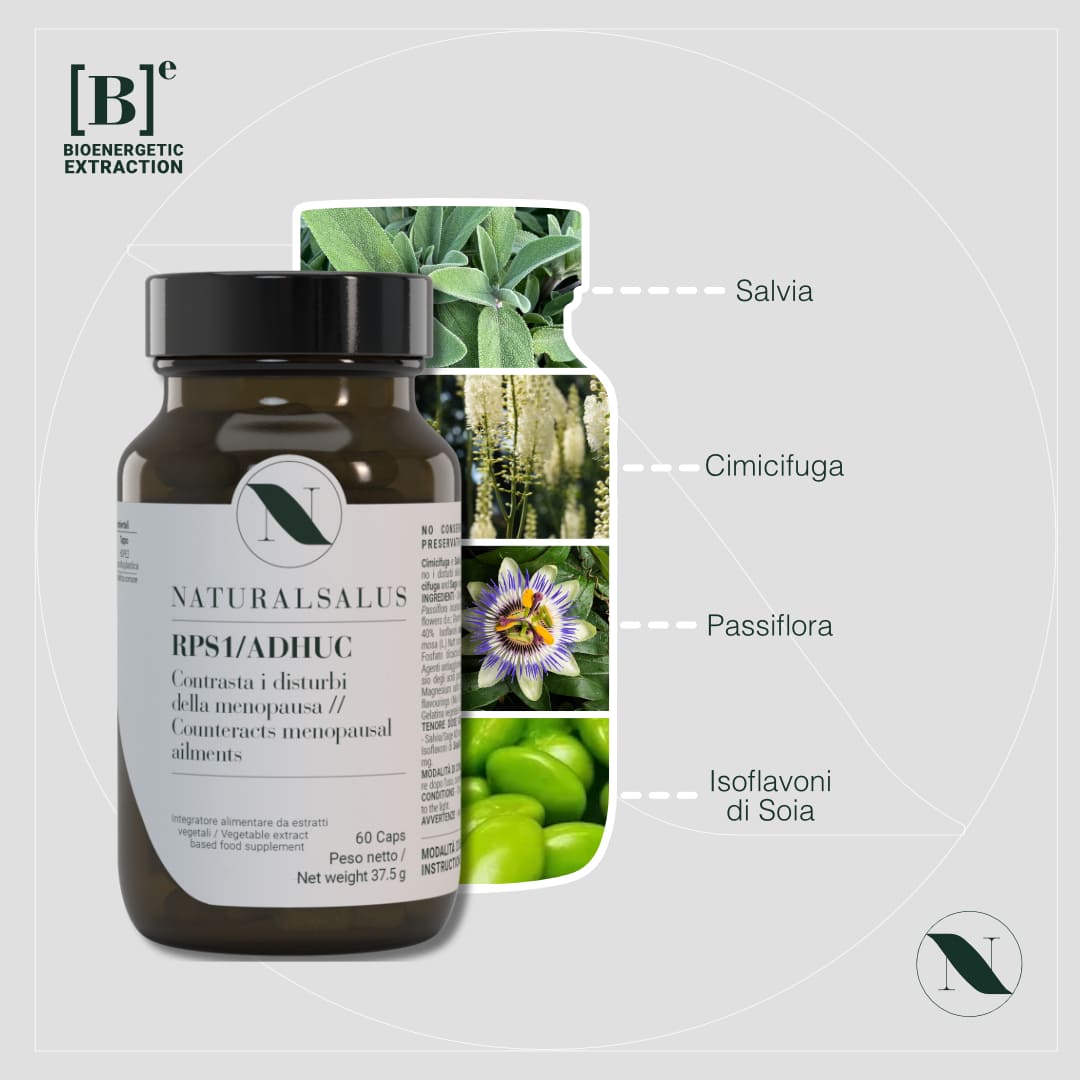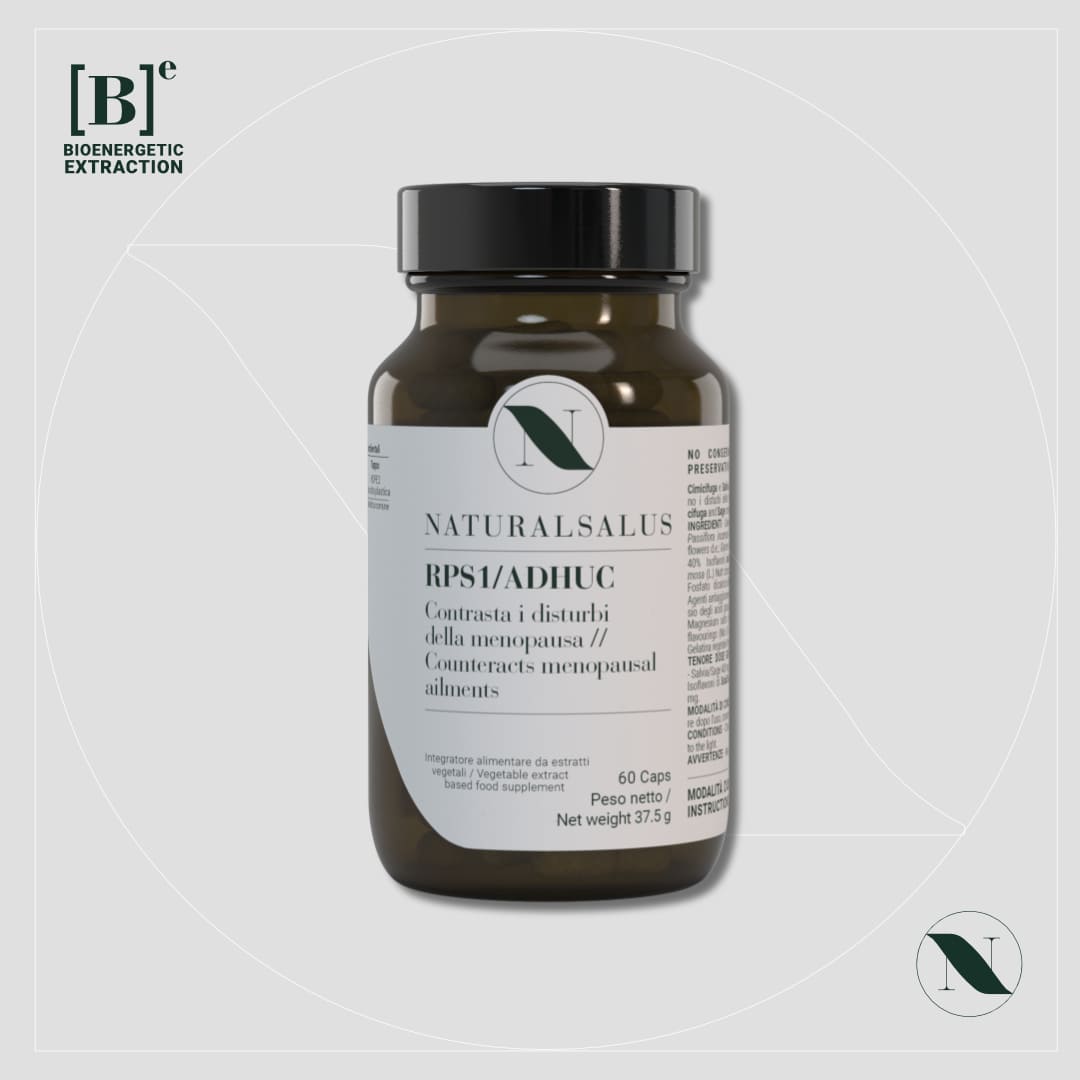

RPS1/ADHUC
Contrast the symptoms of menopause
Food supplement for menopausal disorders, RPS1/ADHUC®, is a product based on Sage, Cimicifuga, Passiflora and Soy Isoflavones: a balanced and synergistic composition of natural principles useful for supplying phytoestrogens which may be particularly suitable during the menopause period, to alleviate the discomfort related to it, but also in certain circumstances during the fertile period, to counteract an excess of estrogen production.

RPS1/ADHUC
Sale price€25,30

RPS1/ADHUC



Esplora altre aree di benessere
Scopri tutti gli altri prodotti, organizzati per disturbo, beneficio, fase di vita o stile di vita, e trova gli integratori naturali più adatti alle tue esigenze.



